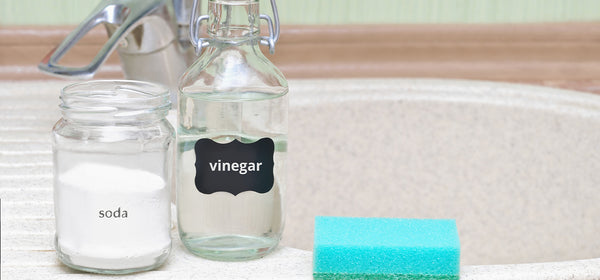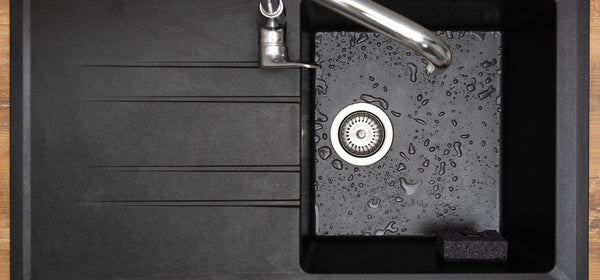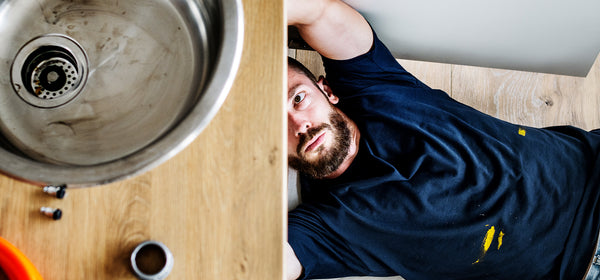How to Clean Kitchen Sink Drain: Easy Cleaning Solutions
Introduction :
Maintaining a clean and odor-free kitchen sink drain is crucial for a hygienic kitchen environment. Over time, kitchen sinks can accumulate food debris, grease, and soap residue, leading to slow drainage and unpleasant smells.
In this comprehensive guide, we will explore various methods and tips on how to clean a kitchen sink drain effectively.
Whether you're dealing with a smelly drain, a clog, or simply want to prevent future blockages, we've got you covered.
Why Cleaning Your Kitchen Sink Drain Matters
Your kitchen sink drain may not be the most glamorous part of your home, but it plays a significant role in your daily life. Here's why keeping it clean is essential:
Now that we understand the importance of a clean kitchen sink drain, let's explore effective methods to achieve this.
how to clean a kitchen sink drain
Methods for Effective Kitchen Sink Drain Cleaning
Cleaning your kitchen sink drain doesn't have to be a daunting task. Here are some tried-and-true methods to ensure your drain stays clean and functional:
1.Flushing the Drain with Hot Water
Flushing your drain with hot water is a simple yet effective method to remove residue and prevent clogs. Here's how to do it:
Fill a large kettle or pot with water and put it over high heat on your stove. Wait until the water starts bubbling and reaches 212°F (100°C) before turning off the heat.
Slowly and carefully pour the water directly down the drain, making sure not to spill or splash any liquid. If the water moves quickly and easily through the drain, then you've cleared the clog.
2.Using Baking Soda and Vinegar
Combining baking soda and vinegar creates a powerful cleaning solution that deodorizes and unclogs the drain. Here's a step-by-step guide:
Scoop the baking soda directly into your kitchen sink drain. Use the end of a spoon or butter knife to push all the baking soda inside the drain so it's not just sitting on the surface.
Add the distilled white vinegar to a pot or kettle and set it over high heat. Let the vinegar sit for a few minutes and take it off the heat once it comes to a rolling boil.
Slowly pour the hot vinegar down your drain a little at a time. When the vinegar combines with the baking soda, it causes a bubbling chemical reaction that will loosen buildup and remove any bad smells from your drain.
This will give the baking soda and the vinegar time to deodorize and clean the drain. As the baking soda and vinegar react, the fizzing will break down the residue stuck inside the drain pipes so it easily washes away.
Set a pot or kettle of water over high heat on your stove, and let it come to a rolling boil. After the baking soda and vinegar have been inside your drain for 5–10 minutes, slowly pour the boiling water down your drain. This will remove and rinse out any scum or debris that’s leftover inside of your kitchen sink drain.
3. Easy Ways to Remove Clogs
Clogs can be a common issue in kitchen sink drains. Here are some effective methods for removing them:
Shine a flashlight down the drain and look for any visible obstructions in the pipes. If you see a clog near the top of your drain or in your garbage disposal, reach in with your needlenose pliers and slowly pull it out.
Set your plunger over the kitchen drain opening so it forms a watertight seal. Slowly press the plunger down, and quickly jerk the handle back up to loosen the clog.
Keep moving the plunger up and down about 20–30 times before taking it out of your sink. Turn on your faucet and let water run through your drain.
If the water flows without backing up, then the plunger removed the clog.
The sink trap is the U-shaped piece connecting the drain to the waste pipe in your wall. Place a bucket underneath the trap to catch any spilled water.
Remove the trap by unscrewing the pipe connections. Rinse the trap in a different sink or with your garden hose.
If you still see residue inside, scrape it out with a wire hanger or a bottle brush.
When you're finished, just reattach the trap to your drain and run water through it.
Remove the trap from the drain pipe underneath your sink and set it aside. To use your drain snake, feed the end into the waste pipe in your wall.
Spin the handle clockwise on the drain snake to feed it deeper into the pipe until you hit an obstruction.
Then, turn the handle counter-clockwise to break apart the clog and pull the snake back out of the pipe.
When you're finished, reattach the sink trap and try running water through your drain.
Bio-friendly cleaners contain natural enzymes that eat away at organic matter, like grease, soap, and fatty debris without using any toxic chemicals.
Pour the cleaner directly into the drain and let it sit for several hours according to the directions on the label.
After that, rinse the cleaner and any residual buildup out with warm running water.
Commercial drain cleaners often contain very strong chemicals or acids that break residue.
Open the windows in your kitchen and put on rubber gloves before handling the cleaners.
Because each drain cleaner works a little differently, follow the directions on the packaging carefully.
Most times, all you'll do is pour the cleaner down the drain, let it sit for a set amount of time, and rinse it out with warm water.
Preventive Measures to Maintain a Clean Drain
Cleaning your kitchen sink drain is essential, but prevention is equally important. Here are some preventive measures to maintain a clean drain:
By following these preventive measures, you can reduce the frequency of drain cleaning and maintain a clean and functional kitchen sink drain.
Choosing the Right Cleaning Products
When it comes to cleaning your kitchen sink drain, using the right products can make a significant difference. Some effective options include:Common Kitchen Sink Materials and Drain Maintenance
The material of your kitchen sink can influence the cleaning process. Let's explore how to maintain different types of sinks:Understanding the material of your sink will ensure you clean it effectively without causing damage.
When to Seek Professional Help
- While DIY methods are effective for routine maintenance, there are situations where it's best to call a professional plumber.
- If you notice persistent issues like recurring clogs or unpleasant odors that DIY methods can't resolve, a local plumber can locate and address the underlying problem more efficiently.
- Additionally, if you have old metal drain pipes under the sink, a plumber may recommend replacing them with PVC pipes, which are less prone to clogs and corrosion.
Comparing PVC and Metal Drain Pipes
Understanding the advantages and disadvantages of different drain pipe materials can help you make informed decisions:Maintaining a Consistent Cleaning Schedule
To ensure your kitchen sink drain remains clean and odor-free, consider incorporating regular maintenance into your cleaning routine.
- Cleaning your drain with hot water, baking soda, and vinegar once a week can prevent the buildup of residue and maintain optimal drainage.
- It's a small effort that goes a long way in preserving your plumbing and ensuring a pleasant kitchen environment.
In conclusion, understanding how to clean a kitchen sink drain effectively is essential for maintaining a functional and hygienic kitchen.
By following the methods and tips provided in this guide and considering the additional information provided, you can ensure that your kitchen sink drain remains in top condition.
Regular maintenance and the right cleaning products can save you time and money while contributing to a cleaner and more sustainable environment.
Incorporate these practices into your cleaning routine, and you'll enjoy a kitchen that's not only aesthetically pleasing but also free from plumbing issues and environmental concerns.
Don't hesitate to seek professional help when needed, and make informed choices about how to clean kitchen sink drain for long-lasting results.
Explore our other related blog posts :
Kitchen Sink Maintenance: Dos and Don'ts for a Smooth-Flowing Home
Choosing the Perfect Kitchen Sink: Expert Tips
Mastering Kitchen Sink Waste & Trap Installation: Your DIY Guide to Plumbing Success





















































































































![Black Kitchen Sink Waste - 90mm [BS100MB]](http://tapron.co.uk/cdn/shop/products/Black_Kitchen_Sink_Waste_90mm__BS100MB_165x.png?v=1636397150)

















Leave a comment
All blog comments are checked prior to publishing